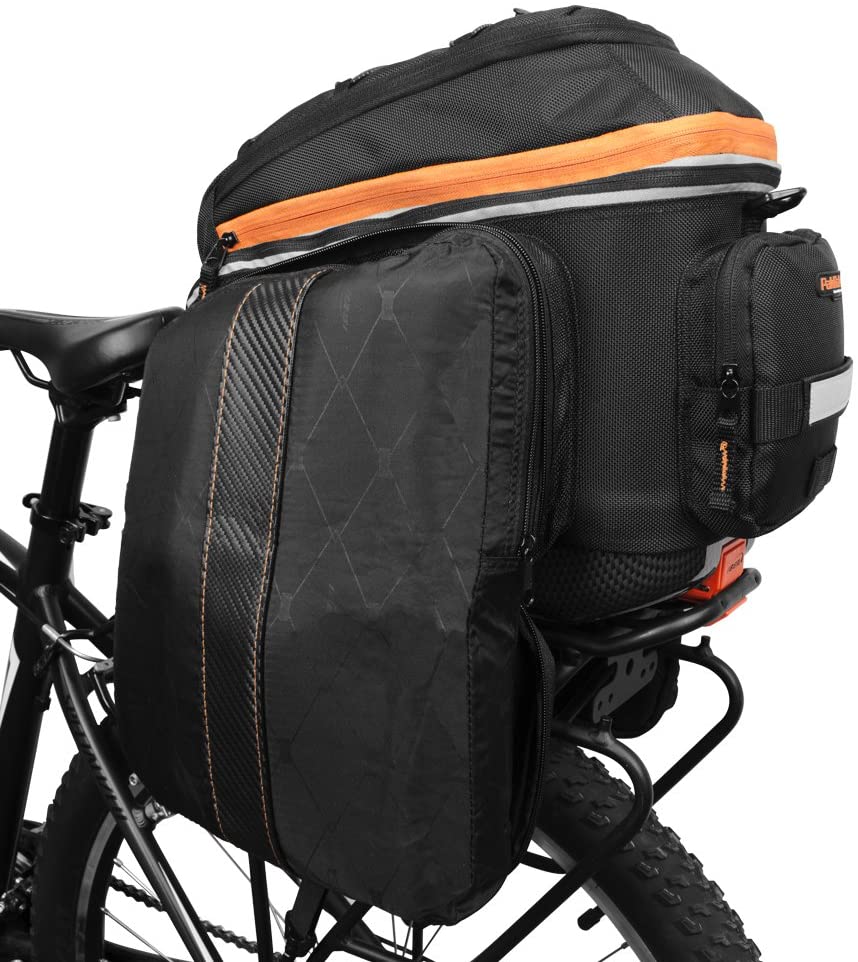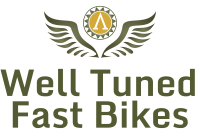 In many areas of the U.S., average folks could be saving themselves many hundreds of dollars per year by doing something as simple as pedaling a bicycle several blocks to the supermarket or drugstore. I'm not speaking primarily of kids or college students. If I can do this at age 53 (and if others can do it at far more advanced ages), you can likely do it. You don't have to be in "athletic" condition (I'm certainly not!); you just have to be able to pedal and steer a modern bike, which, for the majority of the population, is scarcely more complicated than taking a daily stroll through the neighborhood.
In many areas of the U.S., average folks could be saving themselves many hundreds of dollars per year by doing something as simple as pedaling a bicycle several blocks to the supermarket or drugstore. I'm not speaking primarily of kids or college students. If I can do this at age 53 (and if others can do it at far more advanced ages), you can likely do it. You don't have to be in "athletic" condition (I'm certainly not!); you just have to be able to pedal and steer a modern bike, which, for the majority of the population, is scarcely more complicated than taking a daily stroll through the neighborhood.
However, to make this moneysaving approach really work (and not turn into yet another failed experiment), you can't just hop aboard some dusty old, hard-to-shift contraption that you bought at the likes of Wal-Mart years ago and soon relegated to a neglected nook in your garage. And, realistically, for transporting groceries and sundry "stuff," you can't just use a conventional "luggage rack" and a duffle bag (or, worse still, a backpack) to haul a respectable load without quickly getting disillusioned. Nope, you've got to do the following things.
First, go to your nearest established bicycle shop and confidently make a one-time investment (perhaps $300 to $400) in a high-quality, modern, easy-to-shift, easy-to-pedal bicycle that the shop's helpful experts can "fit" to your body. For my purposes, the ideal bike model was a "hybrid," whose configuration and construction is roughly halfway between that of the sleekest "racer" and that of a rugged "mountain bike". I wanted to be sure that the bike could long withstand the inevitable bumps and rigors of suburban sidewalks and certain older city streets; therefore, a "racer"–with its ultra-skinny tires–seemed out of the question. But I also wanted it to be relatively easy to pedal, not to mention reasonably speedy.
I likewise wanted easy-to-reach handlebar grips, such that I could comfortably ride with an upright (not "hunched forward") posture. But I suggest that you don't initially get "hung up" on any particular brand or model; any established bicycle dealer is likely to stock something that could be excellent for your body, as well as your particular transportation parameters.
If necessary, ditch the standard saddle (seat) that comes with the bike, and buy (and have the bike dealer install for free) one of their "aftermarket" saddles that will allow you to continue riding in real comfort, not pain. In my own case, this meant buying a much wider and softer saddle that featured a wider and deeper "center groove" than what most models have. (Hint: Even if the "experts" insist that you should be fine with a "standard" saddle configuration, don't necessarily trust their advice on this particular point.
Ultimately, it will be your body, not their opinions, that you'll have to trust when it comes to saddle configurations and adjustments. Initially, TRY the standard saddle; if it continues to feel great (you're not sore), wonderful. Otherwise, experiment till you find a more than tolerable alternative.)
Next, before taking your bike home, confidently invest still more money in a compact-yet-expandable "trunk bag" and a compatible rear "luggage" rack. Such a "trunk bag" instantly and easily "slides and snaps" into position upon its compatible rack, and it's equally conveniently detachable from the rack. The trunk bag that I use is made by Topeak; it's their "MTX DXP" model. It costs around fifty to sixty bucks, but it's well worth it. In its standard, fully compacted configuration, its main compartment measures only about 13 inches long by 7 inches wide. And the height of the main compartment (when not vertically expanded) is only about 8.5 inches.
Therefore, it can be a surprisingly small bag when you want it to be. Just grab it by its upper "handle," and carry it into a store as you would a valise or purse. I do this nearly every day, and no "door guard" has ever frowned at, much less halted, me. (I can't make the same claim for the modest duffle bag or backpack I'd previously tried carrying into certain stores!) The so-called "multi-expanding top" portion above the trunk bag's main compartment lets you expand the "roof" of the bag. You merely pull a special zipper all the way around the bag (this is almost instantly and effortlessly doable). Conversely, to return the main compartment to its ordinary, compacted configuration, you pull that same zipper in the opposite direction (all the way around the main compartment). Easy!
Besides the main compartment, there are several smaller, normally hidden compartments. Most significant among these are twin "pannier" compartments that, when expanded (unzipped) and hanging down on both sides of the rear wheel, can hold two gallons of milk plus other goodies. Simultaneously, you could put a third gallon of milk in the main compartment and still have plenty of room for other "essentials," such as a dozen large, boxed donuts and more. 🙂 Those panniers really are amazing. Once they're unzipped and hanging down, what had initially seemed an unsatisfactorily small bag has become a rather impressive cargo carrier! [Note: Any compatible Topeak luggage rack will have tubular-metal "side frames" to safely keep the panniers from contacting the wheel.]
Therefore, instead of using my car to make a single weekly trip to the supermarket, I generally enjoy two or three nice, healthy bike rides per workweek during the late afternoon or early evening hours. Doing this helps me avoid those depressingly large and hectic Saturday crowds, and it leaves my weekends free for happier pastimes.
Of course, I use my bike and "trunk bag" for far more than to fetch groceries. I regularly pedal three miles (each way) to the public library. I discovered a nice suburban "bike route" allowing me to make that trip with virtually no stoplights such that the transit time is only about fifteen minutes even when I'm pedaling at merely a "comfortable" speed. By contrast, if I were to use my car, it could take me almost as long to accomplish the same trip, considering that I wouldn't be so prone to avoid the congested "thoroughfares" and avail myself of scenic side streets, occasional stretches of sidewalk, or certain bike-friendly shortcuts!
For security, I simply use a large, cheap padlock and a heavy-duty chain. Those items easily fit within any available cranny of the trunk bag. Just chain your bike to any outdoor bike rack. If no such rack is available, chain it to the next best thing, such as a signpost, flagpole, or tree.
My $300 bicycle paid for itself within months, and it's required virtually no "maintenance" since I bought it two years ago. If you should suffer the rare flat tire (which is unlikely if you spend several dollars to have your bike dealer inject the inner tubes with some self-sealing, "anti-flat" gel), and if you don't know how to fix it yourself (or don't feel like bothering), just use a couple of short bungee cords to fasten your bike upon a basic "bike rack" (quickly attachable to, and removable from, the rear of even a compact car like my Dodge Neon), and take it to your bike dealer. They'll generally do the job very quickly while you wait, and the cost is modest. Besides, in my experience, flats are extremely infrequent. I've only had one in two years, and that was before I had the aforementioned "self-sealing gel" injected. Take it from me: you should have your dealer inject that gel from the get-go (or, if possible, install some specially designed inner tubes that already incorporate such gel).
Some folks here in the American Midwest can't imagine riding a bicycle during the winter months. But if you wisely avail yourself of the kind of jacket, balaclava, goggle, and/or other highly insulating outer (and/or inner) wear used by motorcyclists or snowmobilers, you can even ride your bike rather comfortably on the coldest winter days (assuming the streets are cleared of snow and ice).
Such clothing, admittedly, is a significant extra expense; but it can pay for itself fairly quickly and last for many years thereafter. Indeed, I've already saved myself lots of "gas money" even during the most frigid months–December, January, and February–by donning the aforementioned garb. Admittedly, my wintertime getup somewhat likens me to a ninja assassin, but I've noticed that nobody seems to point or even smirk at me (at least not directly); perhaps some motorists are secretly envious of my fortitude and budgetary sense; but most are simply too preoccupied with their own business to heed me.
On sunny days consider applying maximum-protection sunscreen lotion to all exposed skin whenever you'll be riding your bike much longer than briefly.
A good-quality bicycle can be the frugal person's best friend. Not only can it drastically reduce your gasoline and car-maintenance costs, but the exercise it provides can enhance your health and, conceivably, help curtail future medical problems and associated expenses.
And I must confess that I always feel a bit self-satisfied whenever I blithely pedal past a gas station and observe fellow citizens patiently inserting credit cards prior to tanking up. 😉
How much money will you save (and how much healthy exercise will you derive) by using a bike–instead of your gas-guzzling car or truck–for various routine errands weekly? Well, I'll let you grapple with the math. Only you will determine exactly how frequently you'll be riding your new bike.
But, if you're anything like me, you'll quickly discover that a high-quality bike (from a reputable, specialized shop) is so easy-to-pedal, easy-to-shift, and comfortable that it's a far cry from those cheaply manufactured and ill-fitting contraptions you tolerated as a kid. Today's premier models are downright fun to ride, and you easily could end up saving yourself considerably more than just several thousand bucks over the bike's-and your–long, productive life.
